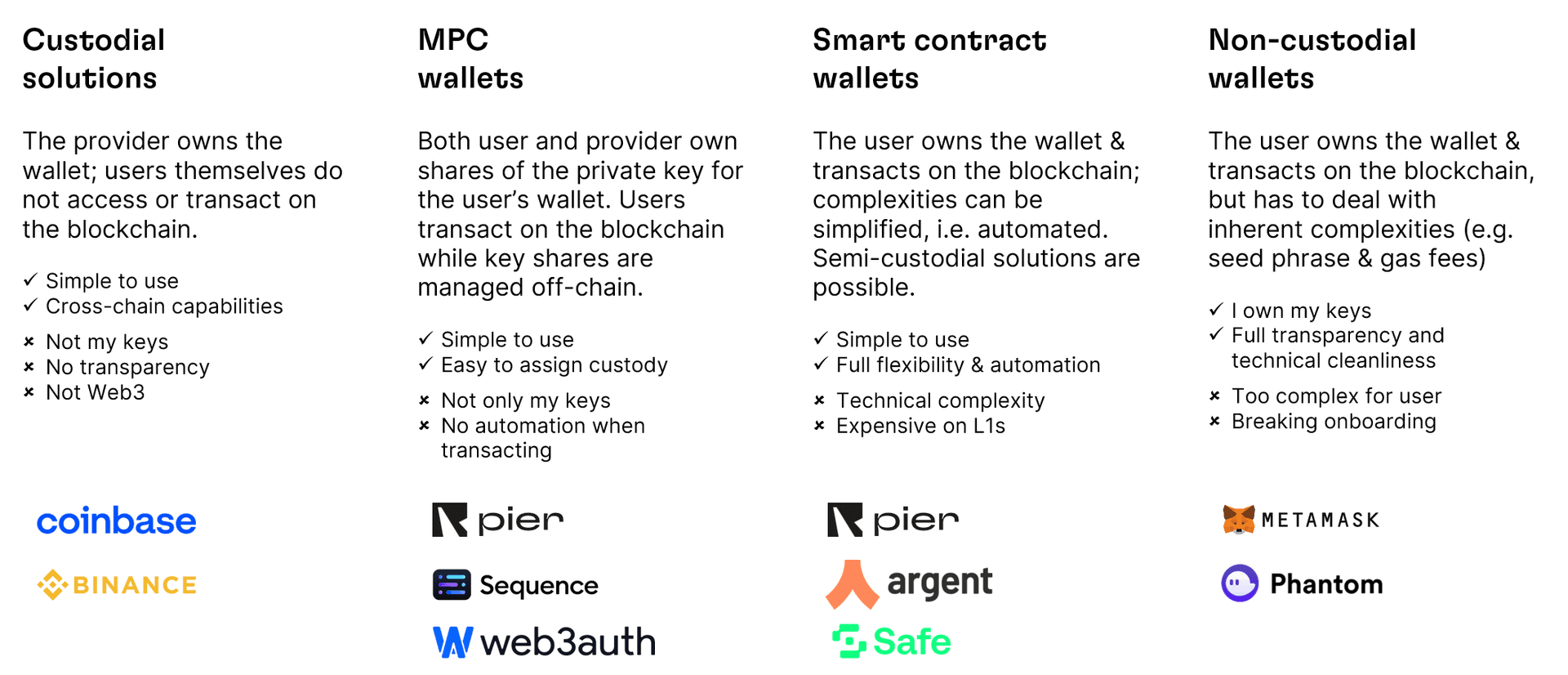Wallets and Key Management
Blockchain technology predominantly utilizes ECDSA (Elliptic Curve Digital Signature Algorithm) for digital signatures, involving a private and a public key. There are a number of ways to manage this:

The key elements of a wallet are:
-
Private Key: A 32-byte integer, typically represented in hash form.
-
Wallet Address: Created by hashing (using sha-256 or keccak-256) the public key.
-
Public Key Generation: Applying the ECDSA algorithm, specifically secp256k1 (used by Bitcoin and Ethereum), to the private key generates a corresponding public key.
The core function of a wallet is to store a private key, enabling the signing of messages and submission of signed transactions on a blockchain. It also tracks the digital values associated with its public address. Let's take a look how these different solutions work under the hood from a technical perspective.

Account Abstraction and Multi-Signature Wallets
Account Abstraction simplifies user interactions on blockchains by treating accounts more like smart contracts. Multi-Signature wallets require multiple keys for authorization, enhancing security.
- Account Abstraction:
- Accounts behave like smart contracts.
- Simplifies transactions and interactions.
- Multi-Signature Wallets:
- Require multiple signatures for transactions.
- Provide an added layer of security.
💡 Account Abstraction represents a shift from traditional key-pair based accounts to a more flexible contract-based approach.
Multi-Party Computation (MPC) Wallets
Multi-Party Computation (or MPC), is a method to distribute a private key among multiple parties.
- Key Sharing: The private key is divided into shares, encrypted, and distributed.
- Independent Computation: Each party computes their share of the key without revealing their portion to others.
- Decentralized Key Storage: The private key is never fully formed in a single location.
This approach mitigates the risk of a single point of failure, as seen in traditional wallets where a compromised device could lead to asset theft.
🔒 With MPC, hacking a wallet requires breaching multiple, diverse systems simultaneously, significantly increasing security.
MPC solutions like MPC-CMP and MPC-GG20 are fast and widely adopted methods for implementing such decentralized key management systems.